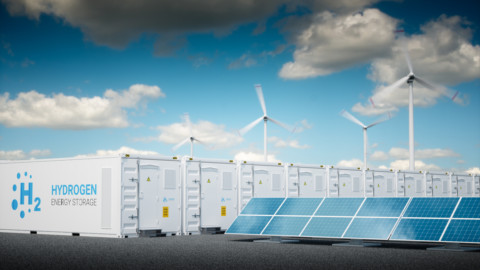By Stephanie Nestor, Journalist, Energy Magazine
Victoria has banned embedded networks following an extensive review to provide better protection for residents by offering them the ability to find cheaper electricity. So what will that mean for consumers and the future of the industry?
In July 2022, the Victorian Government banned embedded networks in new residential apartment buildings and set out policy to reform existing networks. As an election commitment from 2018, the Victorian Government initiated a review led by an expert panel to investigate the situation for residents in apartment buildings.
The Government accepted all the panel’s recommendations to ban embedded networks to ensure all consumers regardless of what type of building they’re living in, can choose their retailer based on price and whether their electricity is generated by renewables.
As the first ban of its kind in Australia, this change signals that reforms are needed to ensure consumers’ rights are protected and embedded networks keep up with the turn to renewables. But according to the Victorian Government, there is still more work to be done to make Australia’s private electricity networks fairer and more transparent.
What are embedded networks?
Embedded networks are privately-owned and managed networks that buy electricity in bulk to sell on to customers within a building or premises. There is one connection point for the larger electricity network that transfers electricity to separate connection points to each tenant or premises.
Embedded networks are typically installed in apartment blocks, retirement villages, social housing, caravan parks, shopping centres and other commercial buildings. According to the Australian Energy Market Commission (AEMC), around half a million people across Australia purchase electricity through embedded networks.
Prior to the ban, embedded network owners did not have to get a licence to charge for electricity and as a result were unregulated.
However, over the years, embedded networks have been required to register with the Essential Services Commission (ESC) and comply with the Australian Energy Regulator (AER) to protect customers’ rights.
In 2019, the Victorian Government put in place the Victorian Default Offer (VDO) to set maximum prices for households and businesses that pay for electricity from an embedded network.
The challenges
Despite the provisions put in place to protect consumers’ rights, customers on embedded networks were reporting feeling trapped, as owners increased prices and prevented them from being able to get cheaper electricity.
The expert panel in charge of investigating and reviewing embedded networks in Victoria heard from hundreds of customers who were forced to pay higher prices for electricity and didn’t have the same ability to shop around for electricity retailers like other Victorians, because their apartment buildings had embedded networks.
Victorian Minister for Energy, Lily D’Ambrosio, said the ban will allow customers in residential apartment buildings to access more competitive deals and save on their energy bills. “We’re banning embedded networks because all Victorians deserve to get the same competitive energy deals and have the same protections, driving down the cost of living when people need it most,” Ms D’Ambrosio said.
“We’ve already delivered energy market reforms, banned door-to-door sales and cold calling, and increased penalties for retailers who engage in dodgy behaviour. This is delivering a better deal for all Victorians.”
Prior to the ban, many sellers to embedded networks were eligible for an exemption from registering as a network service provider with the Australian Energy Market Operator (AEMO) or AER, which meant they fell outside of consumer law.
Several years ago, when embedded networks were established for apartment buildings, many people assumed customers would save money on electricity and developers would invest in more green energy when designing buildings. Unfortunately, this was only in theory, as prices increased significantly and buildings didn’t incorporate renewables.
Providing choice and clarity
After an extensive 18-month review, the Victorian Government supported all of the proposed recommendations set out by the expert panel, with modifications made to some.
The reforms will be made in two phases, with the first phase to begin in January 2023 and the second to follow after further consultation. As part of the ban on embedded networks, no new networks will be installed in residential apartment buildings from January 2023.
Banning embedded networks for new residential apartments and reforming established ones will give residents more options when it comes to electricity. Customers in embedded networks will be able to purchase electricity from an authorised retailer or an exempt seller to find a better deal.
Not only will customers receive better protections regarding disruptions to services and billing, but privately-owned service providers will need to consider adding renewable energy sources to their networks.
The Victorian Government proposed alongside the ban that 100 per cent of the electricity supplied from embedded networks should be from mixed on-site and off-site renewable sources, with a minimum of five per cent on-site renewable energy generation. The panel originally recommended that at least 50 per cent of electricity supplied to consumers in embedded networks be from on-site renewable sources.
However, in consultation with local government and consumer sectors, the Victorian Government deemed the 50 per cent on-site renewables target to be unfeasible for residential apartments due to space limitations.
What happens now?
While these reforms can offer benefits for residents in apartment buildings, reforming embedded networks for small businesses and other non residential buildings will take more time. The second phase of reforms will focus on developing a licensing regime for embedded networks. This will replace the current regulatory framework for networks based on exemptions and take into account other customers and building types.
But determining the details of licensing embedded networks in both residential and commercial buildings will require additional consultation and reforms. Other states are also taking steps to reform embedded networks.
In New South Wales, a parliamentary inquiry investigating embedded networks is underway, in Tasmania there are calls to update the regulatory frameworks, and in Queensland reforms in 2018 allowed customers within an embedded network to purchase electricity from a retailer of their choice.
With the ban taking effect on 1 January 2023, embedded network operators will need to reconfigure or develop their networks to meet the new requirements. While this mostly affects new developments, it remains to be seen how operators will renegotiate contracts with non-green electricity suppliers.
Considering planning and installing these networks happens early on in development and operators enter long-term bulk purchasing agreements, there will be many concerns to resolve before January. Further transparency for both residents and businesses in embedded networks will provide better consumer protections and encourage renewable energy generation, creating a fairer and greener energy market.

















